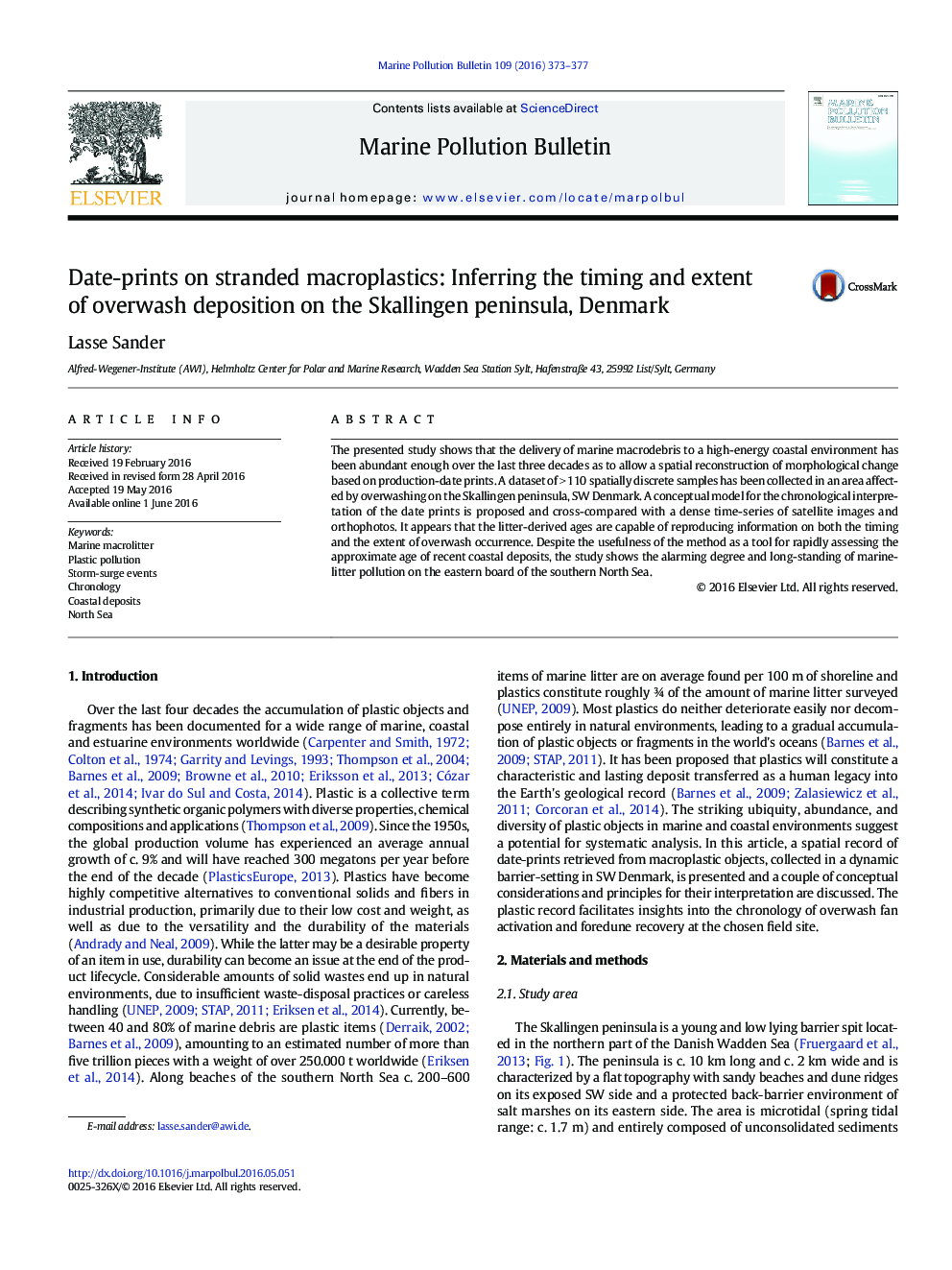| Article ID | Journal | Published Year | Pages | File Type |
|---|---|---|---|---|
| 4476413 | Marine Pollution Bulletin | 2016 | 5 Pages |
•A large amount of date prints was recovered from on-shore marine macrolitter items.•The record is based on storm surge deposits and covers at least three decades of age.•Litter supply to beach and back-barrier has been high since the late 1970s.•GPS surveying of the litter allows a spatial reconstruction of morphological change.•Date-print assemblages may serve to assess the chronology of recent coastal deposits.
The presented study shows that the delivery of marine macrodebris to a high-energy coastal environment has been abundant enough over the last three decades as to allow a spatial reconstruction of morphological change based on production-date prints. A dataset of > 110 spatially discrete samples has been collected in an area affected by overwashing on the Skallingen peninsula, SW Denmark. A conceptual model for the chronological interpretation of the date prints is proposed and cross-compared with a dense time-series of satellite images and orthophotos. It appears that the litter-derived ages are capable of reproducing information on both the timing and the extent of overwash occurrence. Despite the usefulness of the method as a tool for rapidly assessing the approximate age of recent coastal deposits, the study shows the alarming degree and long-standing of marine-litter pollution on the eastern board of the southern North Sea.
